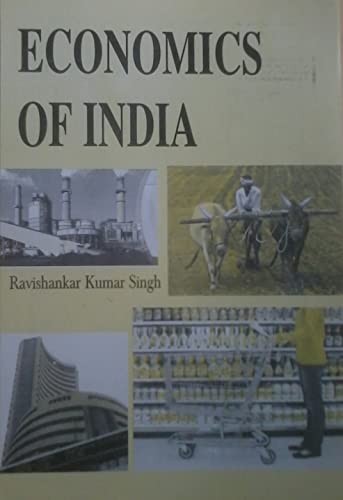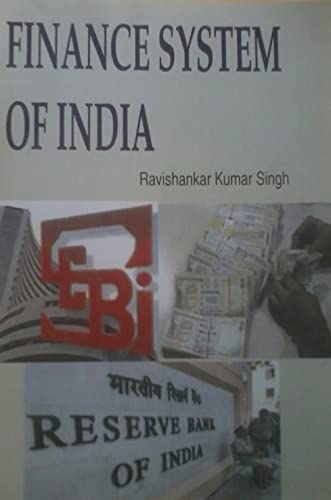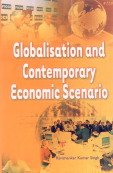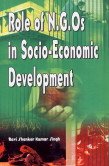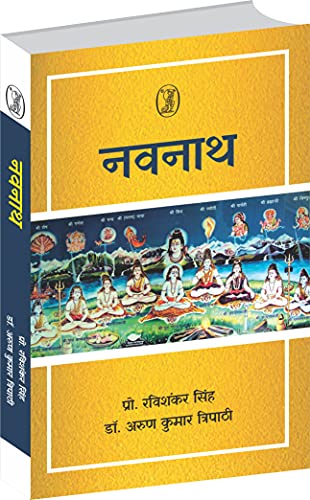Ravishankar Kumar Singh (13 results)
Product Type
- All Product Types
- Books (13)
- Magazines & Periodicals
- Comics
- Sheet Music
- Art, Prints & Posters
- Photographs
- Maps
-
Manuscripts &
Paper Collectibles
Condition
Binding
Collectible Attributes
- First Edition
- Signed
- Dust Jacket (3)
- Seller-Supplied Images
- Not Printed On Demand
Seller Location
Seller Rating
-
Economics of India
Published by Abhijeet Publications, 2013
ISBN 10: 9350740818ISBN 13: 9789350740811
Seller: Books Puddle, New York, NY, U.S.A.
Book
Condition: Used.
More buying choices from other sellers on AbeBooks
Used offers from US$ 26.39
-
Finance System of India
Published by Abhijeet Publications, 2013
ISBN 10: 9350740826ISBN 13: 9789350740828
Seller: Books Puddle, New York, NY, U.S.A.
Book
Condition: Used.
More buying choices from other sellers on AbeBooks
Used offers from US$ 28.50
-
WTO and India : Challenges and Opportunities
Published by Abhijeet Pub, New Delhi, 2008
Seller: Vedams eBooks (P) Ltd, New Delhi, India
Hardbound. Condition: As New. New. Contents Preface. 1. Introduction/R.K. Singh and R. Shashi Kumar. 2. Services under WTO a framework benefits and concerns for India/Prahlad Kumar and Pramita Srivastava. 3. WTO does it represent a new perspective to development/Smriti Mukherjee. 4. WTO and India opportunities and challenges/Birendra Kumar Jha. 5. Small scale industries in the global game of WTO in the global era/Birendra Kumar Jha. 6. Indian Higher Education and WTO Agreements problems and prospects/V.S. Kulkarni and Medha Tapiawala. 7. World Trade Organization and Indian agriculture an unifinished agenda/Sudhakar Dwivedi and Arun Bhadauria. 8. Foreign Direct Investment is a breakfast for fasting India/R. Hiremani Naik. 9. WTO and its impact on small scale industries/K.A. Rasure. 10. India and WTO a view on Globalization and Agriculture Agreement/A. Bose and A. Marimuthu. 11. South Asia trade in the era of economic reforms with special reference to India/K.A. Rasure. The signing of the GATT accord by 120 countries at Marrakesh on the 15 of April 1994 is possibly the greatest endeavour towards human accord in the second half of the twentieth century just as the founding of the United Nations was the greatest achievement of the first half of this century. Thus establishment of the World Trade Organization (WTO) which is the embodiment of the result of Uruguay Round held during a long period of about eight years from 1986 to 1994 is possibly a mighty big event in international economic scenario. This new apex body equipped with the legal authority and provisions for enforcing the commitments rules and norms came into existence on first January 1995. It professes trade liberalisation through an open rule based and non discriminatory multilateral trading system which provides greater trade flows for ail its participating members thereby ensuring fair distribution of the fruits of global economic development. This young institution having 148 countries as its members at present and governing 95% of the global trade emerged as the third economic pillar of worldwide dimension next to the IMF and the IBRD. This biggest international trading organisation helps in implementing the past negotiations initiating periodic review of the trade policy and settling the trade disputes among its member countries. Evolution of a free trading environment for the movement of goods and services is its objective based on the assumption that free trade is an optimal modality of global welfare. The underlying principles of the WTO are transparency and provision by member of national treatment and most favoured nation treatment to all the members. In this book the scholars present their diverse and deep analytical sometimes critical viewpoints on WTO as an organization presenting challenges and offering development and growth opportunities to India. The effects of WTO on Indian economy services agriculture manufacturing small scale industries multinational corporations exports foreign direct investment etc. all have been studied by our scholars as well. It is hoped that this book will prove useful to the students and scholars of Indian economy. 188 pp.
-
Foreign Direct Investment and Economic Development : Essays in Honour of Dr Manmohan Singh
Published by Abhijeet Pub, New Delhi, 2006
ISBN 10: 8188683760ISBN 13: 9788188683765
Seller: Vedams eBooks (P) Ltd, New Delhi, India
Book
Hardbound. Condition: As New. New. Contents Foreword. Preface. 1. Introduction/Ravishankar Kumar Singh and V.S. Kulkarni. 2. Foreign Direct Investment with particular reference to India/Usha S. Iyer. 3. FDI in India with special references to North Eastern Region/Prabha Devi and Bobo Maisnam. 4. Foreign Direct Investment and globalisation the Indian experience/S.M. Jawed Akhtar. 5. Foreign Direct Investment and globalisation/Manoj Shankar Gupta. 6. Foreign Direct Investment (FDI) in India under globalisation period/Binod Choudhary. 7. Globalisation and Foreign Direct Investment/D.N. Patil. 8. Dynamics of Foreign Direct Investment in India/Ranjan Kumar Sinha and Chandra Prakash Singh. With the advent of continuous economic reforms the economy has recorded average growth rate of around 6% in the last decade. One major reform that has taken place in the area of attracting foreign investment into India via either the Foreign Direct Investment (FDI) route or from foreign institutional investors (FIIs). FDI is very stable by nature as it usually enters for long term projects. It also helps to generate employment and bring in the latest technological inventions/advancements. FIIs on the other hand usually help in developing capital markets. Entrepreneurs can tap the capital market by wooing FIIs and can thereby set up new projects or use the funds for expansion etc. However FII investment may not be very stable there can be sudden outflows if capital markets perform adversely or are expected to perform negatively. Even in the South East Asian economic crisis in countries like Thailand and Indonesia it had been the FIIs who had disturbed growth trends by creating sudden outflows of forex reserves thereby resulting in the devaluation of the local currency. The Govt. of India has set for itself the target of achieving $10 billion in FDI inflows per year. As per present guidelines FIIs can invest in shares of Indian companies subject to maximum ceiling to 24% of the issued share capital of a company. Both FDI and FIIs bring in valuable capital and must be encouraged by suitable policy amendments. The Government should consider both as the same while finalising capital expenditure for investment in companies/projects. Yet due to the factors enumerated above FDI is more suitable for a country like India as compared to FIIs as the latter is short term and volatile. Learned contributors in this book seek to explore various aspects of Foreign Direct Investment in country and how it is related to the economic development employment generation infrastructure development and the impact of FDI on a country as a whole. 178 pp.
-
Composite Farming Practices and Economic Development
Published by Abhijeet Pub, New Delhi, 2007
Seller: Vedams eBooks (P) Ltd, New Delhi, India
Hardbound. Condition: As New. New. Contents Foreword. Preface. 1. Rain water harvesting techniques for increasing crop production in Nagaland/A.K. Verma. 2. Prospect and constraint of fish production under the rainfed condition of Nagaland/Sharma A. Kalita D.C. Singh A.K. Nakhro R and V.B. Sharma. 3. Performance of tomato (Lycopersicon esculentum L.) as influenced by transplanting times and cultivation methods/Naresh Babu. 4. Alternate cropping system of Nagaland in North East Region of India/Amod Sharma Sharma Anamika and S.K. Sharma. 5. Dynamics of ecosystem and its pyramidical system/Amod Sharma. 6. Impact of livestock resources to uplift the economy of rural dairy farmers of KOMUL/Nizamuddin and A. Sharma. 7. Constraints of Oyster Mushroom cultivation in Nagaland/Sharma A. Jha K.K. Kalita D.C. Nizamuddin and Upadhyay D.N. 8. Bukhari an alternative to conventional method of brooding in remote and rural areas/R.K. Chaurasia B. Prakash and V.B. Sharma. 9. Comparative study of mash vs. Pellet feeding on the performance of broiler chicken under cage system/Nizamuddin and A.K. Singh. 10. Constraints and prioritization of strategies of agricultural development in Nagaland/Kalita D.C. Singh A.K. Sharma A. and Nakhro R. 11. Crossability relationships among Cajanus species/Jogendra Singh and G.C. Bajpai. 12. Efficacy of biocontrol agents and chemical fertilizers for control of while Moul of French Bean/N. Tiameren Ao K.N. Bhagabati A.K. Phookan B.C. Das and M.C. Talukdar. 13. Water management for effective crop production in Northeastern Hilly Region/R.C. Nayak and Sewak Ram. 14. Variability and character association in various rice ecotypes/Chaturvedi H.P. and D.M. Maurya. 15. Relevance of indigenous farming system in solving food security problem a case study of Phek District/A.K. Tripathi K.K. Datta D.K. Sonowal and A.K. Khan. 16. Constraints faced by lowland Paddy cultivators in Dimapur District of Nagaland/K.K. Jha. 17. Relevance of Jhum cultivation in Nagaland/K.K. Jha. 18. Technology for improving agricultural productivity in Nagaland/Supong Keitzar. 19. Effect of simulated erosion and nitrogen levels on the uptake of N P and K and Yield of upland rice/Manoj Dutta Zakir Hussain and B.S. Chauhan. 20. Constraints of crop production in Nagaland/M.K. Singh. 21. Constraints faced by the Mushroom growers of Dimapur District of Nagaland/Tzudir Bendangmenla Sharma A. Kalita D.C. and Sharma Y.K. 22. Soil conservation and its fertility management systems practice of sloping land in Northeast India/Sapu Changkija. 23. Performance of Maize (Zea mays L.) under various nutrient management practices on terraced land/Sewak Ram B.S. Chauhan and Manoj Dutta. 24. Integrated nutrient management and sustainable agriculture an overview/A.K. Singh P.K. Singh and S.K. Sharma. 25. Zabo and Alder agriculture indigenous farming systems of Nagaland/S.D. Rao Anamika Sharma Chandan Rajkhowa and Joseph Kikon. 26. Regulated market in India/Bendangmenla Tzudir. 27. Evaluation of fungicides in vitro against the growth of cercospora capsici the casual organism of Chilli leaf spot disease/Ruokuovilie Mezhatsu L. Daiho and D.N. Upadhyay. 28. Evaluation of fungicides in vitro against the growth of colletotrichum capsici the casual organism of Chilli fruit rot disease/Ruokuovilie Mezhatsu L. Daiho and D.N. Upadhyay. 29. Screening of chilli cultivars against leaf spot and fruit rot diseases caused by Cercospora capsici and colletotrichum capsici/Ruokuovilie Mezhatsu L. Daiho and D.N. Upadhyay. 30. Studies on management of fruit rot of Chilli (Capsicum annuum L.)/Ruokuovilie Mezhatsu L. Daiho and D.N. Upadhyay. 31. Studies on management of cercospora leaf spot of chilli (Capsicum annuum L.) with systemic and non systemic fungicides/Ruokuovilie Mezhatsu L. Daiho and D.N. Upadhyay. 32. An analysis of marketed surplus of rice in Assam/D.C. Kalita B.C. Bhowmick R.S. Saikia and C. Hazarika. 33. Role of biofertilizers in crop production/R.P. Singh. 34. Alder based Jhum cultivation in Nagaland/Sentinungba L.
-
Globalisation and Contemporary Economic Scenario (2 Vols-Set)
Published by Abhijeet, Delhi, 2005
ISBN 10: 8188683647ISBN 13: 9788188683642
Seller: Vedams eBooks (P) Ltd, New Delhi, India
Book
Hardbound. Condition: As New. New. Contents Vol. I Foreword. Preface. 1. Introduction/R.K. Singh. 2. Globalisation and Foreign Direct Investment (FDI) the Indian experience/S.M. Jawied Akhtar. 3. Implications of globalisation in India/Kumari Nibha. 4. Globalisation and Foreign Direct Investment/Manoj Shankar Gupta. 5. World economic development and India/J. Bala Komaraiah. 6. An assessment of Indian agriculture under WTO regime/Krishna Nand Yadav. 7. Globalisation of domestic banks in India/Umesh Prasad. 8. Globalization of Indian agriculture challenges and future prospects/P.N. Sharma. 9. India's agricultural exports in the post globalisation period/Anju Kumari. 10. Foreign Direct Investment (FDI) in India under globalisation period/Binod Choudhary. 11. Wage flexibility under globalization era/Navin Kumar. 12. Restructuring world economic order dimensions challenges and opportunities/R. Shashi Kumar. 13. Role of information technology in Indian banking in globalised era/Tapan Kumar Shandilya. 14. Globalisation and emerging trends in Sub Saharan Africa a critical observation/S.N. Malakar. Vol. II 15. Globalisation and Indian economy an evaluation from past to present/Baij Nath Singh. 16. Gandhian economics versus globalisation/Birendra Kumar Jha. 17. Globalisation and human development/Dayanidhi Prasad Roy. 18. Globalisation and Indian economy/Ram Binod Singh. 19. Priority sector lending/Gopal Kumar Kalkoti. 20. Towards an appropriate technology for employment creation in India/M.G. Basava Raja. 21. Towards an Asian economic union feasibility and prospects/G.S. Kushwaha and D.R. Singh. 22. Globalisation emerging perspectives/P. Jagadish Gnadhi. 23. Micro enterprises in the era of globalisation a case of KVI sector in India/T.L.N. Swamy. 24. Globalisation a move towards freer trade/Smriti Mukherjee. 25. Globalisation and inequalities in developing economies/Mohd Izhar Ahmad. 26. Globalization and Foreign Direct Investment/D.N. Patil. 27. Globalisation and dynamics of Foreign Direct Investment in India/Ranjan Kumar Sinha and Chandra Prakash Singh. 28. Globalization and its impact on employment a case study of unorganised organised and rural non farm sector in India/Tara Kant Jha. 29. Management of NPAs in RRBs a critical evaluation/K.C. Tomba Singh. 30. Impact of globalisation on Indian economy/Harindra Kishor Mishra. 31. Liberalisation of financial sector in India an evaluation/Nishit Kumar. 32. Women in unorganised sector post reform scenario/Rashmi Akhoury. 33. WTO and India the perspective of developing countries/Ram Naresh Thakur. 34. Globalisation challenges for the developing world in the new millennium/Pranab Kumar Chattopadhyay. Index. At the beginning of the 21 century Globalisation a term first used in 1985 by Theodore Levitt has become a household name in all corners of the world. It connotes pervasiveness inclusiveness and sweepingness with epidemic and pandemic implications in international trade and financial relations. It is a new avatar of the 18 century imperialist colonisation and exploitation and the 20 century neo liberal economic fundamentalism. In its global scope and sophisticated operations it is referred to as the new face of liberal capitalism. Globalisation of any economy means its integration with the world economy. More importantly it refers to a process of deepening economic integration increasing economic openness and growing economic interdependence between countries in the world economy. About thirty five eminent economists/scholars from various backgrounds have contributed in this book. The book is divided into two volumes. The coverage of this book is quite comprehensive the papers not only study the results of ongoing globalization but also provide futuristic insights too. The scholars have tried to grasp various issues related with the globalization of world economy and integration of local/national/regional economy. Globalisation of agriculture capital market and labour are the main areas of concern for the economists. The p.
-
Indian Banking and Financial Sector Reforms : Realising Global Aspirations (2 Vols-Set)
Published by Abhijeet Pub, Delhi, 2006
ISBN 10: 8188683876ISBN 13: 9788188683871
Seller: Vedams eBooks (P) Ltd, New Delhi, India
Book
Hardbound. Condition: As New. New. Contents Vol. I Foreword. Preface. 1. Introduction/Ravishankar Kumar Singh. 2. Indian banking and global aspirations/J. Bala Komaraiah. 3. Globalisation and India's financial service sector/Ram Pratap Sinha and Nitish Datta. 4. Transforming Indian banking/G.M. Bhat and Altaf Hussain Kira. 5. Realigning banking objectives for the rural segment/Kavita G. Kalkoti. 6. Prudential norms for banking sector in India/Satish Shrivastav. 7. Insurance reforms issues and challenges/Anand D. Mulgund. 8. Priority sector lending/Gopal K. Kalkoti. 9. Insurance Industry under GATS Challenges and opportunities/Sadhana Phadnis. 10. Emerging trends and reforms of regional rural banks in India/Baij Nath Singh. 11. Banking sector reforms/R.Y. Mahore. 12. Globalisation and financial sector reforms in India/Ram Binod Singh. 13. Banking sector reforms in India progress and prospects/Harindra Kishor Mishra. 14. Issues and challenges of the merger and acquisition of banking sector in India Mission 2020/Mohan Prasad Shrivastava. 15. Financial reforms and the performance of Indian banking sector/R. Shashi Kumar. 16. Banking scene in the global economy challenges ahead/R. Hiremani Naik. 17. Banking sector reforms performance analysis of public sector banks/S.V. Sowani. Vol. II 18. Impact of Liberalisation Policy on commercial banking sector/Padmasree Jalandhar and Bharati Devi Anchula. 19. Indian banking realising global aspirations/V. Siva Prakasam. 20. Banking sector reforms and their viability in the age of globalization/Sudhakar Dwivedi and Arun Bhadauria. 21. Source and knowledge of rural credit system in agriculture sector/Amod Sharma. 22. Globalization as a source of growth/Smriti Mukherjee. 23. Banking sector reforms in India/H.V. Jhamb. 24. Towards banking excellence under reforms some issues/Manoj Shankar Gupta. 25. Financial stability under reforms/Asha Singh and M.S. Gupta. 26. Formation of an Asian economic community dream or reality/Radhika Lobo. 27. Globalisation and the developing world/Vibhuti Patel. 28. Financial structure and development/Medha Tapiawala. 29. Health insurance an option/Hema Jagannathan. 30. Empowering of Indian Banking System through recovery of Non Performing Assets (NPAs)/B.N. Pandey. 31. Banking sector reforms an assessment and future vision/Umesh Prasad. 32. Strengthening banking system through Narasimham Committee/K.N. Yadav. 33. Banking sector reforms in India progress impact and tasks ahead/P.N. Sharma. 34. Legislative and other structural issues of banking sector in India under reforms/Tapan Kumar Shandilya and Deepak Kumar. 35. Consolidation in banking industry mergers and acquisitions/Anjali Prasad. Index. Of late the banking industry has undergone rapid changes followed by a series of fundamental developments. Most significant among them is the advancement in information technology as well as communication system. This has changed the very concept of traditional banking activities and has been instrumental behind broadening the dissemination of financial information along with lowering the costs of many financial activities. Information technology and communication networking systems have revolutionised the functioning of the banks. In the highly industrialised countries access to financial entities is on an online basis. Banks as well as other financial institutions in India have only recently entered the world of information technology and computer networking. Secondly increasing competition among a broad range of domestic and foreign institutions in product marketing area has become a prevalent practice. Thirdly in line with the increase in overall economic activities financial institutions too have modified themselves accordingly in all the spheres including customer services. Consequently the institutional and systematic structure of the financial sector in general and banking sector in particular has undergone drastic changes. Nowadays we see many changes in banking administration and customer service area.
-
Role of NGOs in Socio-Economic Development
Published by Abhijeet Publications, 2003
ISBN 10: 8188683051ISBN 13: 9788188683055
Seller: dsmbooks, Liverpool, United Kingdom
Book
Paperback. Condition: Like New. Like New. book.
-
Tavareekh ke Panno se
Published by Anamika Publishers & Distributors (P) Ltd, 2020
ISBN 10: 8179756556ISBN 13: 9788179756553
Seller: Mispah books, Redhill, SURRE, United Kingdom
Book
Hardcover. Condition: New. New. book.
-
Navnath
Published by Vani Prakashan, 2021
ISBN 10: 9390678749ISBN 13: 9789390678747
Seller: dsmbooks, Liverpool, United Kingdom
Book
Paperback. Condition: New. New. book.


